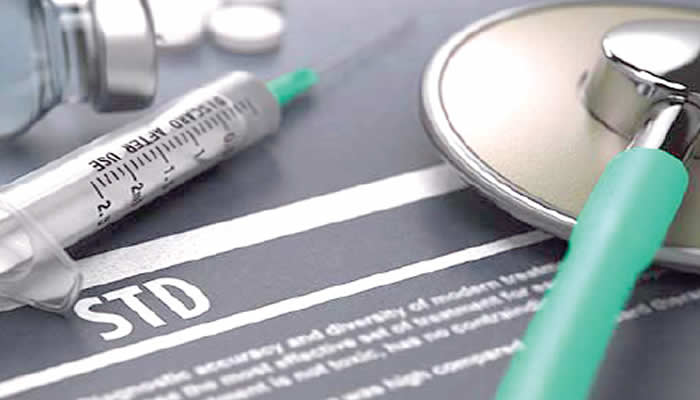~ We asked so you don’t have to ~
Curious about STDs and getting tested in St. Maarten? “Health & Beauty” contacted St. Maarten Laboratory Services (SLS) to ask the awkward questions, so that you don’t have to. Medical Microbiologist Dr. Radjin Steingrover, who processes these tests, gave us some insight into the process. As St. Maarten’s only medical laboratory, the perspective of SLS is as representative as it gets.
First, a brief introduction: Sexually transmitted diseases (STDs), also called sexually transmitted infections (STIs), are spread mostly by unprotected sexual contact, but can also be transmitted during pregnancy, childbirth and breastfeeding and through infected blood or blood products, according to the World Health Organization (WHO). The majority of STIs can go for a long time without causing symptoms. While most can be simply treated, others have limited or no treatment options. Left undiagnosed and untreated, they can cause serious health problems.
“Condoms used correctly and consistently are effective methods to protect against STIs and HIV. Screening with early diagnosis of people with STIs and their sexual partners offers the best opportunity for effective treatment and for preventing complications and further transmission,” states the WHO.
As you’ll read below, the most common STDs that SLS comes across can also be hard to detect, so protect yourself, and get tested.
The following questions and answers are based on an interview with Dr. Steingrover:
What are some of the most common STDs here, according to what SLS comes across? Have there been any noticeable changes recently?
The most commonly encountered STDs at the lab are chlamydia, gonorrhoea, and syphilis. The frequency is fairly stable, with a higher incidence in young adults. It’s noticeable that the age range goes all the way from age 13 to 70.
Which STDs can commonly go unnoticed, with either mild symptoms or no symptoms at all?
Syphilis, hepatitis B and C, and HIV (human immunodeficiency virus) can be carried for long periods of time without any signs or symptoms. Chlamydia and even gonorrhoea can be asymptomatic.
Asymptomatic infections are more common in female- than in male-patients. Unnoticed, these infections can cause female infertility, or an acute severe infection of the ovary/fallopian tube called pelvic inflammatory disease.
What is the testing process like for the most common STDs?
Urine: Chlamydia and gonorrhoea are easily tested in a “first catch” urine, which is the very first bit of a urine that comes out. There should be no urination for three hours prior to collecting the sample. This can be done by the patient at home, and brought to the lab.
A PCR (polymerase chain reaction) test is then done, which can detect both bacteria. Some 90-95% of tests turn out negative. The lab sends the result to the requesting physician, or if they can be collected by the patient from the lab.
Blood: For syphilis, a blood sample is the most common way to test: antibodies against the bacterium Treponema pallidum would be detected. Sometimes, additional testing would be needed in the form of a microscopy or PCR test.
For HIV and hepatitis, SLS draws a small amount of blood, and tests for specific human antibodies against the various viruses. A confirmation test on a second sample may be needed. Confirmation is usually another test of far higher quality and cost to detect antibodies: Western Blot or PCR.
Does someone, who wants to get tested, go through their doctor, or go straight to SLS?
Overall, it’s simpler to go through the doctor. SZV/insurance usually covers tests that are indicated and requested by an SZV-registered doctor, like your GP or a medical specialist from the Medical Center. A person can go straight to SLS, however, the payment would be different.
If it’s for chlamydia and gonorrhoea specifically (using a “first catch” urine sample as described above), a urine sample can be collected at home or at SLS. HIV and syphilis can be tested in blood drawn at SLS. Sometimes, however, swabs are required (e.g. of the urethra, vagina, cervix, throat, anus, or eye) and they must be done at the doctor’s office, by the doctor or a nurse.
Test results are sent to doctors via a secure online portal that is linked to the laboratory information system.
It sounds like these services are easily accessible to most people. However, what about minors afraid of their parents finding out, or undocumented residents who might be hesitant, or anyone very concerned about privacy?
The privacy concern is huge in the small islands of the Caribbean. Anonymous testing is not available at this time; however, results are private. It is known that STD detection goes up if affordable and anonymous options are available, preferably combined with contact alerting. St. Maarten has yet to venture into this way of testing.
While showing ID might be a concern for undocumented residents, it should be noted that IDs/passports/licenses from any country is accepted. Proper photo identification is needed, in compliance with the professional standards for medical labs. It assures that privacy is respected, and results are only available to the right people.
As for minors who might refrain from getting tested for fear of getting in trouble with their parents, it should be noted that according to the Dutch laws and guidelines followed here by all physicians and other healthcare workers; as of age 16, there is no obligation to inform parents/ guardians of any tests or treatments. And, when it comes to STD testing in particular, the age drops down to 12. As such, teens can be tested without their parents being informed, and if there is a reason to test, they should get tested.
How often/ when should someone get checked?
Since some STDs may not cause any signs or symptoms, it’s a good idea for anyone who is sexually active, and has unprotected sex, to test for these diseases. Syphilis, hepatitis B and C, HIV, even chlamydia and gonorrhoea can go undetected for too long, without testing.
The frequency of testing depends on the person and situation, but it should be done at least every one to five years. For high risk groups, such as sex workers, testing should be done more often – for example, every three months.
It’s also common to get checked during a pregnancy, or before entering a new relationship.
Of course, when a person has suspect-signs or -symptoms, they should get tested. Symptoms can include vaginal discharge, pain when urinating, or genital blisters or ulcers. When someone has these symptoms, they are usually checked for chlamydia, gonorrhoea and herpes.
There is a vaccination available for hepatitis B, and it may be good idea to get this vaccination (three shots) if you are at risk of STDs, if you have not done so already.
Discovered on: 2022-06-07 13:40:07
Source: The Daily Herald – STDs & testing in St. Maarten


